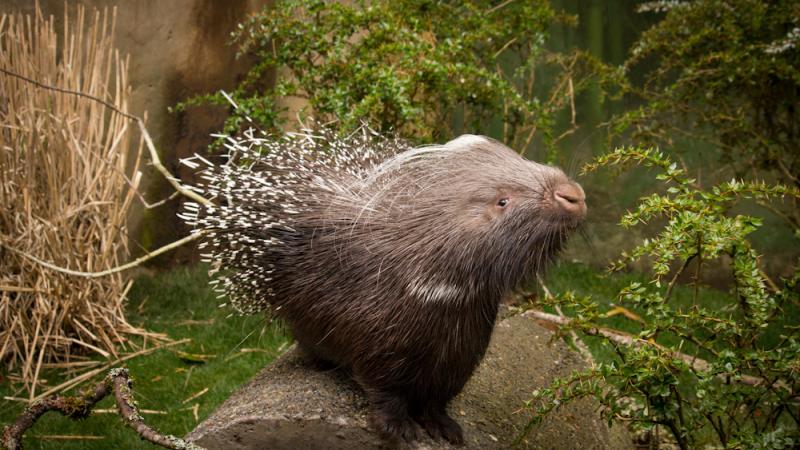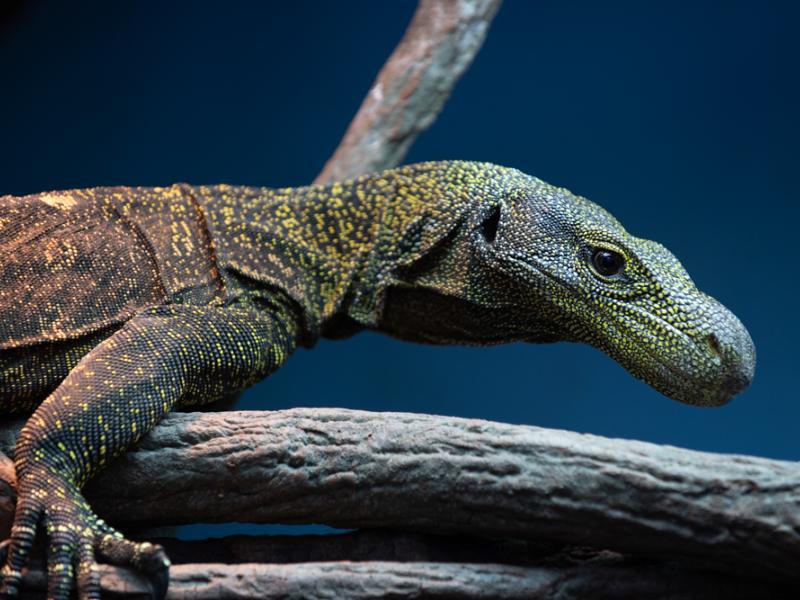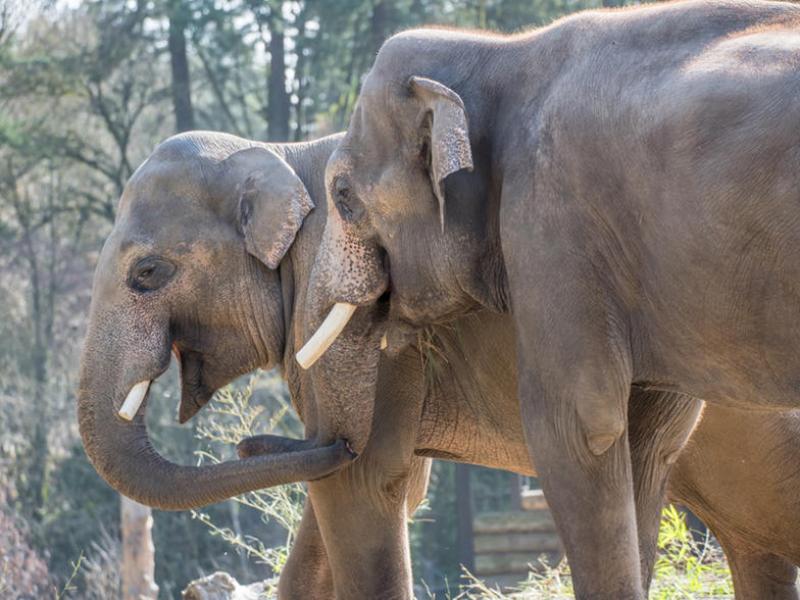
The life of an African cape porcupine
The sharp, sturdy quills of the African cape porcupine give it highly effective protection against predators. Its body is covered with coarse quills 1 to 13 inches long and of varying thicknesses. Its most heavily armed area is its hindquarters, which have short, thick quills.
When it is confronted by a predator, the African cape porcupine raises the 12- to 13-inch quills along its head and back into a crest so its body appears larger and more threatening. If this strategy doesn't chase off the predator, the porcupine stamps its feet, clicks its teeth, and rattles its hollow-tipped tail quills. If this fails, it runs backward and rams the attacker with the short, thick quills on its backside. The tips of its quills lodge in its enemy's skin, and the resulting wounds can disable or even kill the predator. Porcupines have been known to injure lions, leopards, hyenas, and even humans.
African cape porcupines eat tubers, bark, bulbs, fallen fruit, and cultivated root crops. They are nocturnal and forage alone at night, traveling up to 9 miles in their search for food. They return to the den and rest during the day. Though they forage alone, they live in small family groups made up of an adult pair and their young, both infants and juveniles. They develop elaborate burrows to house this family group.
African cape porcupines are monogamous. Mating is a thorny challenge because of the spines and quills of the two participants. Females usually have one litter per year after a pregnancy lasting about 112 days. One to 4 offspring, called "porcupettes," are born in a separate grass-lined birth chamber within the burrow system. The porcupettes are born with open eyes and developed teeth, though the quills on their backs are soft. They leave the den about a week later, just as their quills begin to harden.
African cape porcupines are 24 to 36 inches long, not counting their 3 to 6 ½ inch tail. They weigh between 22 and 66 pounds. They live about 20 years, both in the wild and in captivity.
African cape porcupine conservation
African cape porcupines are not endangered, but because they eat cultivated crops they are seen as agricultural pests. Farmers use dogs to hunt them or smoke them out of their burrows; in some areas, farmers illegally use poison to kill them. They are also killed for their quills, which are used as ornaments and talismans. In North Africa they are killed and sold to be used in traditional medicine.
African cape porcupines at the Oregon Zoo
The Oregon Zoo's African cape porcupines live in the Africa Rainforest exhibit.
Because they are rodents, their teeth keep growing throughout their lives, like beavers and rats. Keepers provide them with many opportunities to wear down their teeth. The zoo's horticulture team brings them logs, sticks, and leafy branches to carry and chew the bark off of. Keepers also offer them antlers to carry around and chew. In the wild, porcupines have been known to collect and chew bones. The care team keeps the porcupines mentally stimulated by offering their daily diet in puzzle feeders and doing training sessions to maintain important behaviors like getting on a scale once a month for weight monitoring.
How you can help the African Crested Porcupine
Help expand the Oregon Zoo's local and global conservation efforts by joining our Giving Circle. Your donation will help build on the successes of the Future for Wildlife program, which has provided funding for conservation projects around the world since 1998.




